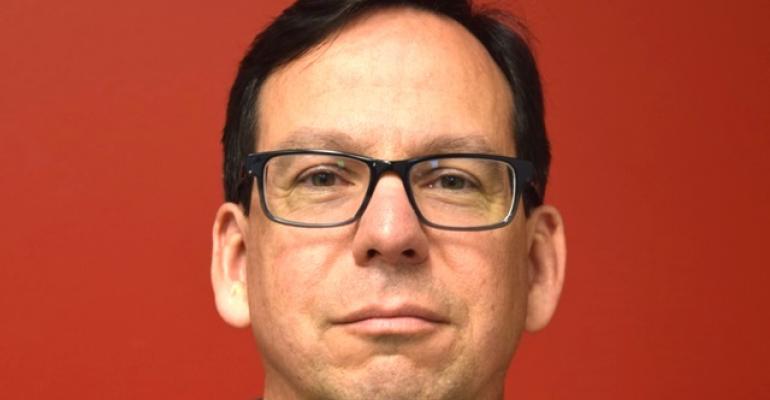Anyone following the powertrain world may have been baffled earlier this week when German suppliers Bosch and Mahle announced they would sell the joint venture they launched in 2008 to meet anticipated skyrocketing demand for exhaust turbochargers.
Nine years later, most of the projections have been far surpassed and turbos are flooding the market.
Paired with gasoline direct injection, turbochargers largely are responsible for the downsizing trend that has bestowed 4-cyl. gasoline engines with more than enough power density to do the job of a 6-cyl. Likewise, production of V-8s is falling because turbocharged 6-cyl. engines often match or exceed them in horsepower, torque and fuel economy.
Consistently, new engine programs from automakers are leaning toward forced induction rather than natural aspiration. Seven of the 2017 Wards 10 Best Engines are turbocharged. Of the 40 new or improved powertrains evaluated last fall, 22 of them had turbos.
In the face of such demand, why in the world would Bosch and Mahle want out of this market?

The official answers are somewhat predictable: Bosch Mahle Turbo Systems is new to the segment and remains too small. To gain market share from established players requires big investment from two companies that would rather spend their product-development euro elsewhere.
But wouldn’t that investment pay off? Bosch is the largest supplier in the world, and Mahle’s big too. Wouldn’t an expanded presence in a booming segment be good for the bottom line?
Or perhaps the market is reaching a plateau. Nope, the companies admit demand for turbochargers will be brisk for years to come. Globally, 42% of light-vehicle engines are turbocharged, and it’s forecast to reach 62% over the next 10 years.
BorgWarner, a giant in the turbocharger market, says 56% of hybrids will be using turbocharged engines in the next decade, up from 18% last year.
OK, so it’s not a case of turbocharged internal-combustion engines facing extinction anytime soon. Still, the market has gotten awfully crowded in recent years.
The entrenched players are BorgWarner and Honeywell (maker of Garrett turbos), who together command two-thirds of the global market. The remainder is split somewhat evenly by Japanese players IHI and Mitsubishi Heavy Industries, as well as the European newbies BMTS and Continental.
With so many suppliers, automakers are prone to whipsaw them for the best price. But that’s the nature of the business, for right or wrong, across multiple product sectors.
Scott Gallett, vice president-marketing at BorgWarner, tells WardsAuto he doubts Bosch and Mahle want out because of extreme pricing pressure.
“Understand, it is not an easy business to break into,” Gallett says. “There are high barriers of entry.”
It took 60 years for BorgWarner to develop a complete line of turbos, from simple to sophisticated, for gasoline and diesel engines. Keeping up with changing technologies is vital.
BorgWarner and Honeywell have spooled up capacity to meet the growing demand, and neither wants to cede market share to upstart rivals. BorgWarner has 10 manufacturing locations for turbos in 12 countries, as well as a dedicated tech center.
By comparison, BMTS produces turbos in Shanghai and St. Michael, Austria, and the venture has additional activities in Stuttgart and Blaichach, Germany. The venture has 1,400 employees and feeds product to commercial vehicles as well.

Rolf Bulander, Bosch’s chairman of Mobility Solutions, says in a statement that BMTS needs to achieve higher volumes and the same kind of economies of scale that benefit BorgWarner and Honeywell.
The JV has manufactured 5 million turbochargers since production began in 2012, and volumes continued growing, peaking at 2 million units in 2016, alone, according to BMTS.
In 2009, Bernd Bohr, then-chairman of Bosch’s automotive group, was extremely bullish about prospects for the new venture. At the time, he predicted sales of 1.5 million turbochargers annually by 2015. “And we’re looking for further contracts,” he told me.
So the JV’s output has exceeded Bosch’s own forecast from several years ago. Why abandon this market?
Asked if the sale is occurring because Bosch and Mahle management could not agree on how to run the JV, a spokesman insists there is no discord and that the two companies are in agreement about selling. Rival Continental could be a potential bidder but isn’t commenting.
The pencil pushers might have the upper hand, perhaps convincing top management that selling now will fetch a higher price, before turbo demand wanes and before the economy takes its inevitable dip.
But there’s another way to look at it: It’s also a great time to manufacture and sell turbochargers.




